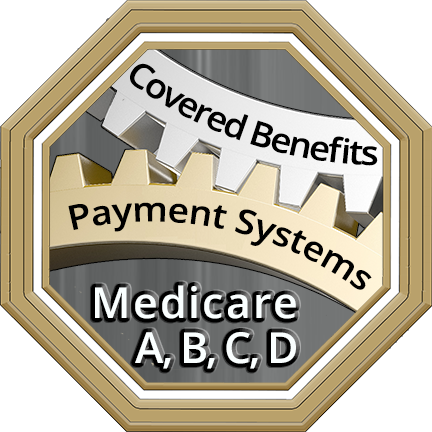The 57-Year Evolution Of Medicare - A Four Part National Health Insurance ProgramMedicare Part A & B
Medicare was established in 1965 with the passage of Title XVIII Amendment of the Social Security Act “Health Insurance for the Aged” and in 1966 Medicare coverage took effect. The legislation established two related national health insurance programs for the aged.
|
In 1972 legislation expanded coverage to include individuals under the age of 65 with long-term disabilities and individuals with end-stage renal disease (ERSD). In 1973 Medicare coverage for the disabled took effect.
Medicare Part C
In 1982 Medicare Part C, referred to as Medicare Advantage (HMO), was established with the Tax Equity and Fiscal Responsibility Act (TEFRA). The act authorized Medicare to contract with risk-based private health plans, or those plans that accept full responsibility for the costs of their enrollees' care in exchange for a prospective, monthly, per-enrollee payment. Risk based contracting began in 1985.
In 1982 Medicare Part C, referred to as Medicare Advantage (HMO), was established with the Tax Equity and Fiscal Responsibility Act (TEFRA). The act authorized Medicare to contract with risk-based private health plans, or those plans that accept full responsibility for the costs of their enrollees' care in exchange for a prospective, monthly, per-enrollee payment. Risk based contracting began in 1985.
Medicare Part D
In 2003, the Medicare Prescription Drug, Improvement, and Modernization Act established Medicare Part D and coverage took effect in 2006. Part D is a voluntary outpatient prescription drug benefit available for seniors and younger persons with disabilities who are covered by Medicare.
In 2003, the Medicare Prescription Drug, Improvement, and Modernization Act established Medicare Part D and coverage took effect in 2006. Part D is a voluntary outpatient prescription drug benefit available for seniors and younger persons with disabilities who are covered by Medicare.
Medicare Enrollment
65.8M beneficiaries were enrolled in at least one or more of the Medicare coverage plans as of April 2023.
- Part A & B (original Medicare) = 33.9M - 51.5%
- Part C (Medicare Advantage) = 31.9M - 48.5%
- Part D (prescription drug coverage) = 51.7M
- 65 and older beneficiaries = 58.1M - 88.3%
- Disabled beneficiaries = 7.7M - 11.7%
Medicare Coverage - Parts A, B, C, & D
|
Medicare covered benefits for all four Parts (A, B, C, and D) are outlined in a series of Chapters in the Medicare Benefit Policy Manual and the Medicare National Coverage Determinations (NCD) Manual. Policy and Coverage Determination manuals are based on legislated language and subject to Agency interpretation.
Medicare Payment Systems |
Each of the four legislated Medicare insurance plans, (Part A, B, C, & D) covers different healthcare-related costs and pays for these well-defined services utilizing 20 complicated fee-for-service and prospective payment systems.
- Accountable care organization payment systems
- Ambulance services payment system
- Ambulatory surgical center services payment system
- Clinical laboratory services payment system
- Critical access hospitals payment system
- Durable medical equipment payment system
- Home health care services payment system
- Hospice services payment system
- Hospital acute inpatient services payment system
- Inpatient psychiatric facility services payment system
- Inpatient rehabilitation facilities payment system
- Long-term care hospitals payment system
- Medicare Advantage program payment system
- Outpatient dialysis services payment system
- Outpatient hospital services payment system
- Outpatient therapy services payment system
- Part B drugs payment systems
- Part D payment system
- Physician and other health professional payment system
- Skilled nursing facility services payment system
How WHG Can Help
Medicare continuously seeks industry and public input to help improve the quality of care for Medicare beneficiaries. Annually, for most payment systems, Medicare publishes proposed rule and fee schedule modification with supporting documentation typically about six to eight months in advance of the final rule implementation date.
Staying informed of the annual rulemaking processes and modifications is critical to sustaining long-term success to help maximize stakeholder value.
WHG helps clients understand potential challenges to proposed and final rules and the impact of subsequent payment modifications. Avenues for potential dialogue with CMS include the following:
- Policy clarification
- Benefit manual revision
- Coding modification
- Coverage expansion
- Payment revaluation
Contact us to discuss how WHG can help your organization navigate the appropriate coverage and respective payment systems to head off any unforeseen challenges.
Information sourced from CMS website


